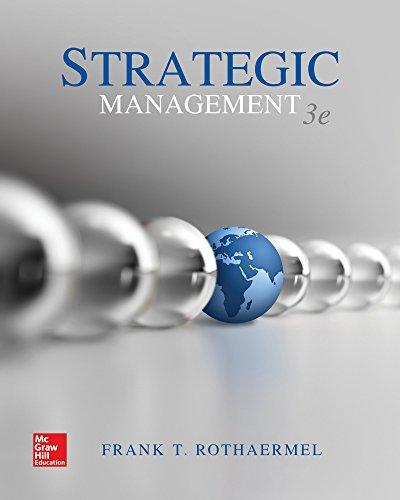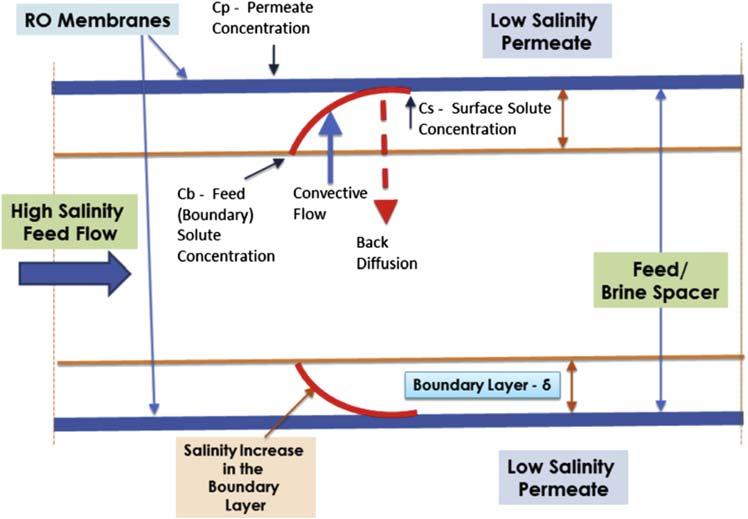Cashed Up with Commercial Property: A Step-by-Step Guide to Building a Cash Flow Positive Portfolio Helen Tarrant
https://ebookmass.com/product/cashed-up-with-commercial-property-astep-by-step-guide-to-building-a-cash-flow-positive-portfolio-helentarrant/
ebookmass.com
Strategic Management: Concepts 3rd Edition Frank Rothaermel
https://ebookmass.com/product/strategic-management-concepts-3rdedition-frank-rothaermel/
ebookmass.com
The Last Lie Patricia Forde
https://ebookmass.com/product/the-last-lie-patricia-forde/
ebookmass.com
Sejarah Jamaah Tabligh di Parongpong (1999-2023) Dr. Ajid Hakim
https://ebookmass.com/product/sejarah-jamaah-tabligh-diparongpong-1999-2023-dr-ajid-hakim/
ebookmass.com
Lost To Us (The President’s Daughters Book 5) Kathryn Shay




https://ebookmass.com/product/lost-to-us-the-presidents-daughtersbook-5-kathryn-shay/
ebookmass.com

PRETREATMENTFORREVERSE OSMOSISDESALINATION
Elsevier
Radarweg29,POBox211,1000AEAmsterdam,Netherlands TheBoulevard,LangfordLane,Kidlington,OxfordOX51GB,UnitedKingdom 50HampshireStreet,5thFloor,Cambridge,MA02139,UnitedStates
Copyright © 2017ElsevierInc.Allrightsreserved.
Nopartofthispublicationmaybereproducedortransmittedinanyformorbyanymeans, electronicormechanical,includingphotocopying,recording,oranyinformationstorageandretrieval system,withoutpermissioninwritingfromthepublisher.Detailsonhowtoseekpermission,further informationaboutthePublisher’spermissionspoliciesandourarrangementswithorganizationssuch astheCopyrightClearanceCenterandtheCopyrightLicensingAgency,canbefoundatour website: www.elsevier.com/permissions .
Thisbookandtheindividualcontributionscontainedinitareprotectedundercopyrightbythe Publisher(otherthanasmaybenotedherein).
Notices
Knowledgeandbestpracticeinthis fieldareconstantlychanging.Asnewresearchandexperience broadenourunderstanding,changesinresearchmethods,professionalpractices,ortreatmentmay becomenecessary.
Practitionersandresearchersmustalwaysrelyontheirownexperienceandknowledgeinevaluating andusinganyinformation,methods,compounds,orexperimentsdescribedherein.Inusingsuch informationormethodstheyshouldbemindfuloftheirownsafetyandthesafetyofothers, includingpartiesforwhomtheyhaveaprofessionalresponsibility.
Tothefullestextentofthelaw,neitherthePublishernortheauthors,contributors,oreditors, assumeanyliabilityforanyinjuryand/ordamagetopersonsorpropertyasamatterofproducts liability,negligenceorotherwise,orfromanyuseoroperationofanymethods,products, instructions,orideascontainedinthematerialherein.
LibraryofCongressCataloging-in-PublicationData
AcatalogrecordforthisbookisavailablefromtheLibraryofCongress
BritishLibraryCataloguing-in-PublicationData
AcataloguerecordforthisbookisavailablefromtheBritishLibrary
ISBN:978-0-12-809953-7
ForinformationonallElsevierpublicationsvisitour websiteat https://www.elsevier.com/books-and-journals
Publisher: JohnFedor
AcquisitionEditor: AnitaKoch
EditorialProjectManager: AmyM.Clark
ProductionProjectManager: MohanapriyanRajendran
Designer: ChristianBilbow
TypesetbyTNQBooksandJournals
8. GranularMediaFiltration
8.1Introduction154
8.2TheFilterOperationCycle155
8.3KeyFiltrationSystemComponents158
8.4FilterTypesandConfigurations161
8.5FilterPerformance168
8.6SourceWaterPretreatmentPriortoGranular MediaFiltration176
8.7PlanningandDesignConsiderations176
8.8ConstructionCostsofGranularMedia FiltrationSystems183 References186
9. MembraneFiltration
9.1Introduction188
9.2TheMembraneFiltrationProcess190
9.3KeyFiltrationSystemComponents194
9.4FilterTypesandConfigurations197
9.5FilterPerformance203
9.6PlanningandDesignConsiderations204
9.7OverviewofMembraneProductsUsedfor SalineWaterPretreatment207
9.8DesignExamples216
9.9ConstructionCostsofMembrane PretreatmentSystem218 References219
10. ComparisonofGranularMedia andMembranePretreatment
10.1Introduction221
10.2EffectofSourceWaterQuality onPerformance222
10.3SurfaceAreaRequirements224
10.4QuantityandQualityofGenerated Residuals224
10.5ChemicalUse227
10.6PowerUse228
10.7EconomyofScale228
10.8FiltrationMediaReplacementCosts229
10.9Commoditization230
10.10WaterProductionCosts233
10.11ConcludingRemarks237 References238
11. GuidelinesforPretreatment SystemSelection
11.1Introduction239
11.2PretreatmentSelectionGuidelines240
11.3AdditionalConsiderationsforSelection ofPretreatment247 References248
12. ReverseOsmosisSystemDesign andPretreatment
12.1OverviewofTypicalSWRODesalination System250
12.2SWROMembraneElements KeyTypesand PretreatmentConsiderations250
12.3InternallyStagedMembrane Configuration FoulingImplications256
12.4AlternativeSWRO-MembraneSystemsand Pretreatment257
12.5AlternativesforControlofMicrobial Fouling272 References276
Glossary277 Index281
Preface
Atpresent,reverseosmosis(RO)membranedesalinationisthepredominanttechnologyforproductionoffreshwaterfrom salinewatersources(seawater,brackishwater, wastewater,etc.).Theengineeredsemipermeablemembranesemployedbythistechnology havetheabilitytoallowtransportofpure watermoleculesatan order-of-magnitude higherratethantheyallowtransportofsalts.
However,the finemicrostructureofthe semipermeablemembranespresentlyused fordesalinationbyROdoesnotpermitpassageofparticulatescontainedinthesaline sourcewaterorformedduringthedesalinationprocess.Therefore,ifpresentinthefeed watertotheROmembranesinsignificant amount,theseparticulatesmaycausemembranefouling,which,inturn,mayrapidly decreasemembraneproductivityandresult indesalinationplant-performancefailure. Membranefoulantsaretypicallyorganicand inorganiccolloidsandparticulates,naturally occurringinthesalinesourcewaterorgeneratedonthesurfaceofthemembranesby aquaticmicroorganismsorphysicalchemical processesthatoccurduringRO-saltseparation andconcentration.
Thepurposeofthepretreatmentsystemis toadequatelyandeffectivelyremovefoulantsfromthesalinesourcewaterandto secureconsistentandef ficientperformance oftheROmembranesthatprocessthepretreatedwaterandproducedesalinatedwater.Thepretreatmentsystemistypically locateddownstreamofthedesalination plant’sintakefacilitiesandupstreamofthe seawaterRO-membranesystem.
Dependingonthesource-waterquality, desalinationplant’spretreatmentsystemmay consistofoneormoretreatmentprocesses including:screening,chemicalconditioning, clarificationbydissolvedair flotationor gravitysettling,granularmedia filtration, membranemicrofiltration(MF)orultrafiltration(UF),andcartridge filtration.Priorto processingthroughsedimentationand/or filtration,thesalinesourcewaterusedfor membranedesalinationisconditionedbythe additionofanumberofchemicals(biocide, coagulant, flocculant,antiscalant,etc.)inordertoimproveperformanceofdownstream treatmentprocesses.
Thisbookprovidesadetailedoverviewof keyprocesses,technologies,andequipment usedforpretreatmentofsalinewaterused formembranedesalination,anddiscusses theirareasofapplication,pasttrackrecord, advantages,anddisadvantages.Thework describestypicalcausesandmechanismsof RO-membranefoulingandpresentsmost recentdevelopmentsinpretreatmenttechnologyandscience.Whilethebookmakes reference,whenapplicable,topretreatment ofbrackishwaters,itscontentismainly focusedofpretreatmentofseawaterforRO desalination.Itshouldbepointedout,however,thatpracticallyalltechnologiesand source-waterconditioningmethods describedinthisbookareequallyapplicable topretreatmentofseawaterandbrackish water.
Thebook’schaptersaddresspracticallyall aspectsofpretreatmentofsalinesourcewater usedforproductionoffreshwaterby
membranedesalination,suchasthenature, origin,andcharacterizationofkeymembrane foulants,thediagnosticsofROmembrane fouling,theimpactofthetypeofthedesalinationplantintakeonthesourcewaterfouling potentialandtheconfigurationofthepretreatmentsystem,themostcommonlyused source-waterscreeningtechnologiesand equipment,source-waterconditioningfor pretreatment,sandremoval,clarificationby gravitysettlinganddissolvedair flotation,and salinesourcewatergranularmediaand membrane filtration.Inaddition,thebook providesacomparativeanalysisofmembrane pretreatmentandincludesguidelinesforpretreatmentsystemselection.
Thebookalsoincludesguidanceandexamplesforsizingandcostestimationofkey desalination-plantpretreatmentfacilities.It isimportanttounderlinethatthefacilityand equipmentprocedurespresentedinthis bookarenotintendedtoserveasstandard, all-inclusivedesignprocedures,buttheir mainpurposeistoillustratetypicalmethodologiesandapproachesusedbydesalinationprofessionals.Referencestoparticular technologies,equipmentandmembrane manufacturersshouldnotbeconstruedasan endorsementbytheauthororarecommendationforapreferentialuseorconsideration.
Costgraphsincorporatedinthisbookare recommendedtobeusedonlyforthepreparationofinitialorder-of-magnitudeestimatesoftheconstructioncostsofthe respectivepretreatmentsystemsandare presentedin2017USdollars.Site-specific projectconditions,currencydifferences,and otherfactorsmayresultinsignificantdifferencesbetweentheactualfacilityconstructioncostsandthevalueofthesecosts determinedusingthecostgraphsofthis book.Thereaderisrecommendedtocontact thesuppliersofthespecificpretreatment
technologies,whichareplannedtobeused fortheirdesalinationprojectinorderto receiveupdatedcostscommensuratewith localandinternationalmarketconditionsat thetimeofprojectimplementation.
Thebookincludesatotalof12chapters, whichfollowthetypicalsequenceofsaline source-waterpretreatmentpriortomembranedesalinationandguidethereadertowardtheselectionofthemostsuitable pretreatmenttechnologyorcombinationof technologiesforthesite-speci ficconditions ofagivenproject.Asindicatedpreviously, themainemphasisofthisbookisthepretreatmentofseawaterforROdesalination.
Chapter1providesabriefoverviewofthe keyreasonsofwhyseawaterpretreatmentis neededpriortomembranedesalination.The chaptermainlyemphasizestheroleof pretreatmentintheproductionofdesalinatedwaterandtheinterrelationofpretreatmentsystemandotherdesalination plantcomponents.
Chapter2describesthetypeoffoulants typicallycontainedinsourceseawateror brackishwaterandexplainshowthesefoulantsimpactRO-membraneperformance.In addition,thischapterdiscussesthemost commonmethodspresentlyemployed worldwidetocharacterizetheRO-membrane foulingpotentialofsalinewatersandidentifiesthresholdlevelsforkeysource-water qualityparametersthattriggeraccelerated membranefouling.
Chapter3featuresanoverviewofthe typicalRO-membranefoulingphenomena observedinfull-scaledesalinationsystemsand themethodsusedfordiagnosticsofthetype andseverityofmembranefouling.Thechapter alsoillustratestheuseofRO-membraneautopsyformembranefoulingdiagnostics.
Chapter4discussestheimpactofthetype andconfigurationofthedesalinationplant
intakeontheselectionanddesignofthe pretreatmentsystem.Thechapterencompassespracticalpretreatmentexperience withdesalinationplantsusingbothopen intakesandsubsurfaceintakesandcontains guidanceofhowtoselectintakeconfigurationthatminimizesdownstreampretreatmentrequirementsforthesite-specific conditionsofagivendesalinationproject. Thechapteranalyzesthekeyadvantages andchallengesassociatedwiththeuseopen andsubsurfaceintakesandthetrade-offbetweentheuseofcostlierintakesandless complexpretreatmentsystemsandvice versa.
Chapter5focusesonthetypeand configurationofthemostcommonlyused screeningequipmentappliedforremovalof courseparticulatematerials(largedebris, algae,jelly fish,etc.)fromthesalinesource water.Thechapteraddressesthecriteriafor selectionofbar,band,anddrumscreensas wellasmicroscreens,andcartridge filters.
Chapter6isdedicatedtosystemsfor additionofchemicalstothesalinesource water,whichallowtoconditionthiswater priortoitsfurtherpretreatmentordirect applicationforRO-systemprocessing.Sourcewaterconditioningisofcriticalimportance fortheefficientandcost-effectivesedimentation,and filtrationoftheparticulateand organiccompoundscontainedinthewateras wellasforpreventionofformationofscaleon theRO-membranesurface.Thischapterdescribesthepurposeanddosingofcommonly appliedsource-waterconditioningchemicals suchascoagulants, flocculants,scaleinhibitors,biocides,acids,andbases.
Chapter7presentsalternativepretreatmenttechnologiesthatarecommonly appliedforremovalofrelativelylargesuspendedsolidscontainedinthesourcewater. Thechaptercontainskeydesigncriteriaused forsizingoflamellasettlersanddissolvedair
fl
otation(DAF)clarifiersandprovidesconstructioncostcurvesforthesefacilities.
Chapter8isdedicatedtothemost commonlyusedtypeoftechnologyfor removalof fi ndsolidsfromthesource water granularmedia filtration.Itdiscusses alternativetypesof filtersusedindesalinationplantsandtheirareaofapplicationand performance.Thechapterincorporatesconstructioncostcurvesforgravityand pressure-drivengranularmedia filtration systems.
Chapter9discussestheuseofMFandUF membranesforpretreatmentofsalinesource water.Thechapterpresentskeyconsiderationsassociatedwiththeselection,planning,andcostestimatingofmembrane pretreatmentsystemsforseawaterdesalinationplants.Thischapterincorporatesdesign examplesforsubmergedandpressuredrivenmembranepretreatmentfacilities.
Chapter10providesacomparativeanalysisofthekeyadvantagesanddisadvantagesofgranularmediaandmembrane pretreatment filtersintermsof:theeffectof sourcewaterqualityandtemperatureon theirperformance;surfacearearequirements;quantityandqualityofthe generatedresiduals;chemicalandpower uses;andoverallwaterproductioncosts.
Chapter11featuresamethodologyfor identifyingthetypeandconfigurationofthe mostsuitableseawaterpretreatmentsystem forthesite-speci ficconditionsofagiven desalinationproject.Theselectionmethodologyisbasedontheanalysisofthesource waterqualitycollectedbythedesalination plantintakeandisbuiltupontheindustrywidepracticalexperiencewiththeimplementationofalternativetechnologiesand configurationsoverthepast20years.
Chapter12delineateshowtoaccessthe impactofthepretreatmentsystemonthe selectionofthemost-suitableconfiguration
andkeydesigncriteria(flux,recovery,feed pressure,etc.)ofthedownstreamseawater RO-desalinationsystem.
Thisbookisintendedforwatertreatment professionalsinvolvedintheplanning designandoperationofdesalinationplants forproductionoffreshwaterfromsaline
watersources(seawater,brackishwater, high-salinitywastewater).Thebookissuitableforwaterutilitymanagersandplanners, consultingengineers,operatorsofdesalinationplants,andstudentsandteachersinthe desalination field.
mg/L Microgramsperliter
mm Micrometer
mS/cm Microsiemenspercentimeter
N Nitrogen
Na Sodium
Na2S2O4
Na2S2O5
Sodiumhydrosulfite
Sodiummetabisulfite
NaHSO3 Sodiumbisulfite
NaOH Sodiumhydroxide
NDMA N-nitrosodimethylamine
NDP Netdrivingpressure
Nepv NumberofelementsperROvessel
NF Nano filtration
Ni Nickel
NL Noleaks(formembraneintegrity)
NOM Naturalorganicmatter
NPDES Nationalpollutantdischargeeliminationsystem
Nt NumberofROtrains
NTU Nephelometricturbidityunit
Nvpt NumberofvesselsperROtrain
O&M Operationandmaintenance
Op Averageosmoticpressure
ORP Ooxidation-reductionpotential
P Phosphorus
PA Polyamide
PACL Polyaluminumchloride
Pd Pressuredrop
PE Polyethylene
PES Polyethersulfone
pH Indicationofacidityorbasicityofsolution
Pp Permeatepressure
ppt Partperthousand(1ppt ¼ 1000mg/L)
Pr Permeaterecoveryrate
psi Poundspersquareinch(unitofpressure)
PTFE Polytetra fluoroethylene
PVC Polyvinylchloride
PVDF Polyvinylidenedifluoride
PVP Polyvinilpyrrolidone
PX Pressureexchanger
Qbw Dailyvolumeofbackwashwater
Qc Dailyvolumeofdesalinationplantconcentrate
Qf Salinesourcewaterdaily flow
Qp Volumeoftheplantfresh-waterproduction(dailypermeate flow)
Qs Volumeofthesalinesourcewater(daily flow)
R Plantrecovery
Rnew Resistanceofnewmembranes
RO Reverseosmosis
Rt Membraneresistanceaftergiventimeofoperation
s Second
S Membraneareaofanelement
SBS Sodiumbisulfite
SCADA Supervisorycontrolanddataacquisition
SDI Siltdensityindex
SDSI Stiff Davissaturationindex
SEM Scanningelectronmicroscopy
Si Silicium
SMP Speci ficmembranepermeability
SO4 Sulfates
SP Saltpassage
Sr Saltrejection
Sr Strontium
SWRO Seawaterreverseosmosis
SUVA Speci ficUVabsorbance
TCF Temperaturecorrectionfactor
TDS Totaldissolvedsolids(salinity)
TDSc Concentratesalinity
TDSf Feedwatersalinity
TDSp Permeatesalinity
THM Trihalomethanes
Ti Titanium
TN Totalnitrogen
TOC Totalorganiccarbon
TMP Transmembranepressure
TP Totalphosphorus
TSS Totalsuspendedsolids
UAE UnitedArabEmirates
UC Uniformitycoef ficient
UF Ultra filtration
US UnitedStates(ofAmerica)
USBR USbureauofreclamation
USEPA Unitedstatesenvironmentalprotectionagency
UV Ultravioletirradiation
UV254 UVabsorbanceat254nm
VFD Variablefrequencydrives
VROsystem VolumeoftheROsystem
WET Wholeeffluenttoxicity
WHO WorldHealthOrganization
WWTP Wastewatertreatmentplant
Y Desalinationplantrecovery
yr Year


